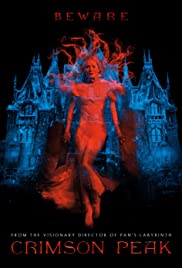Contributed by Sam Knight
Gothic Horror is anti-romanticism—with horror, and the foundation of modern Horror. Tending toward exploration of the darker side of humanity and the human psyche, it has many hallmark elements but is amazingly diverse in which may or may not come into play. Often melodramatic, and known for foreboding settings, ominous foreshadowing, and a generally pervasive feeling of dread, the genre deals in the unknown; hidden, mysterious, and terrible histories of events, characters, and building/estates/cities are usually driving factors. Characters are frequently mired by societal and familial obligations, opinions, religious beliefs, moralities, and confusion as to their own sanity. Supernatural happenstance, bad omens, bad dreams, and things that go bump in the dark are commonplace and may or may not be all in the protagonist’s mind. If all that sounds like Gothic Horror…it’s not. Not really. That was all still just Gothic. After all that, add in (or rather ramp up) the horror to get Gothic Horror.
The Castle of Otranto (1764) by Horace Walpole is generally credited as the first Gothic novel (though elements of the genre are much older) and considered by many to be the first Horror novel. Mary Shelly’s Frankenstein: or, The Modern Prometheus (1818) is not only Gothic, but often considered the genesis of the modern Horror genre and the first Science Fiction novel as well. Edgar Allan Poe has been called the American Gothic writer, and his novel, The Fall of the House of Usher (1839), is possibly the quintessential American Gothic novel. Other examples include Dracula by Bram Stoker, The Turn of the Screw by Henry James, The Picture of Dorian Gray by Oscar Wilde, Something Wicked This Way Comes by Ray Bradbury, Salem’s Lot by Stephen King, and Mexican Gothic by Silvia Moreno-Garcia. Gothic Horror movies include Cat People (1942), The Spiral Staircase (1946), Sweeney Todd: The Demon Barber of Fleet Street (2007), Crimson Peak (2015), and, of course, The Pit and the Pendulum (1961).











